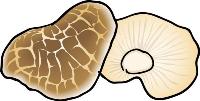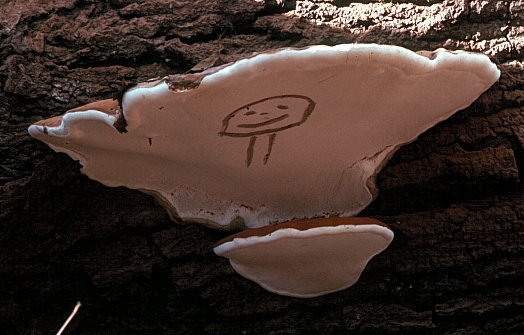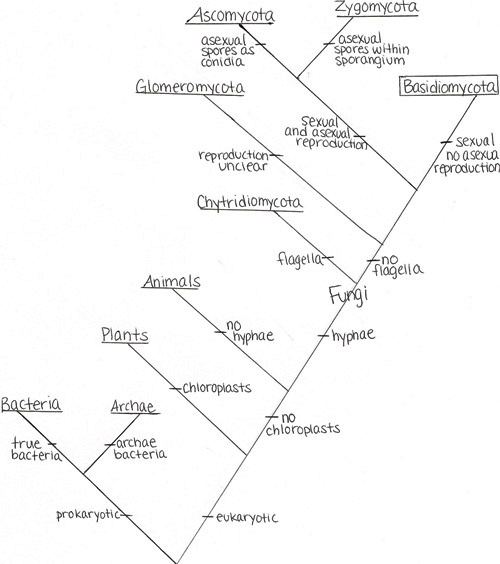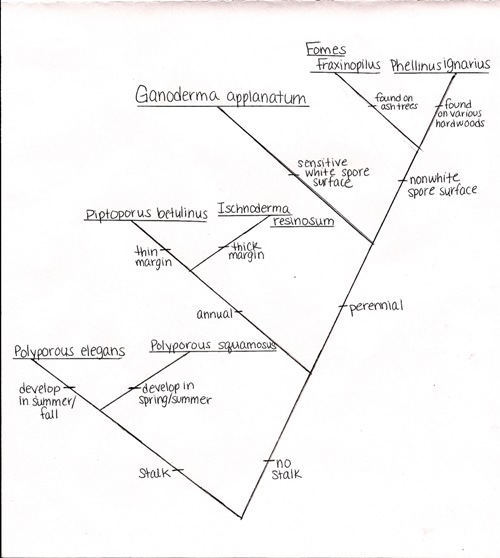Identification
WHAT DOES ONE LOOK LIKE?
Good question! In order to identify this common fungus, one needs to know some common characteristics. Ganoderma applanatum is a very common, perennial, woody shelf fungus that grows on the sides of trees. The fruiting body can vary from shelf to bracket to horse-shoe shape; also, the fruiting body can be uneven or bumpy, with the majority of the time being flat. Because Ganoderma applanatum grows on trees, the brackets do NOT possess stalks. These brackets can be brown or gray in color, sometimes covered with rusty brown spores during certain times of the year. That is the color of the surface of the mushroom. The underside is white; this is where the pores are. When the underside is bruised or scratched, the white is stained brown. This is the explanation for the common name, Artist’s Conk. Artists harvest these brackets and make artwork on the undersides of the fruiting bodies.
PHYLOGENETIC TREES
PHYLOGENETIC TREE #1
The first phylogenetic tree is based on morphology and reproduction. The tree first splits based on if the organism is prokaryotic (bacteria and archea) or eukaryotic (plants, animals, and fungi). Since my organism is a fungus, we travel up the right side of the tree. Ganoderma applanatum has hyphae and mycelia, but no chloroplasts. Therefore, the plants and animals have split off. The fungi are split into five different phyla. The differences between the phyla are the sexual states each phylum has. Ganoderma applanatum is a basidomycete, which comes from the phylum basidiomycota. Basidiomycetes can reproduce sexually and cannot reproduce asexually. I made this general tree to show you where this type of fungus would fall when dealing with organisms other than fungi.
PHYLOGENETIC TREE #2
The second phylogenetic tree is more concentrated, allowing us to deal with fungi only; the tree focuses on different polypore species in the Basidiomycete class. Like in the first tree, the separation of organisms is mostly morphological. As you can see, the tree splits in two, depending on if the fungus has a stalk or not. Because Ganoderma applanatum does not have a stalk, we continue up the right side. There is a fork in the road; we need to decide if the fungus grows annually or perennially. We follow perennial because this fungus so happens to be just that. There will be another separation; does this specific fungus have a white spore surface or a nonwhite spore surface? We follow the white, sensitive spore surface, and end up finding Ganoderma applanatum. I made a tree like this in order to show you where Ganoderma applanatum fits in comparison to other related species. To make the tree more bearable, I decided to cut out A LOT of species. There are a lot of different species of basidiomycetes, especially polypores, and it would be too difficult and confusing if I included all of them. Just remember, there are a lot of relatives missing, but in general, this is how Ganoderma applanatum fits in morphologically with these few related fungi.
* If you are interested in the art associated with this bracket, check out the interesting facts page.
* If you are confused by some terms, including "basidiomycete" or "polypore," check out the next page for more information.
NEXT PAGE = CLASSIFICATION
 Artist's Conk (Ganoderma applanatum)
Artist's Conk (Ganoderma applanatum)

